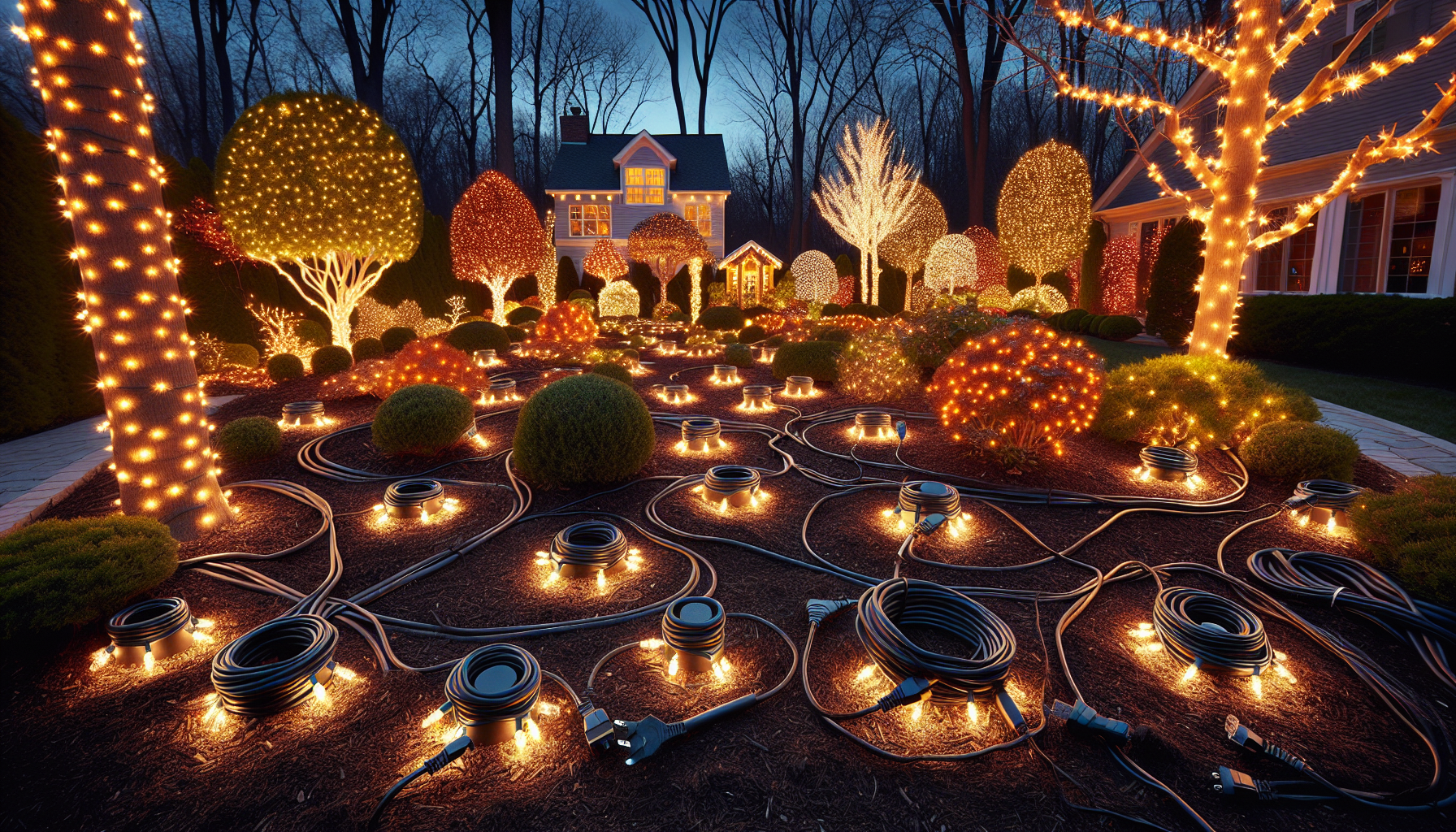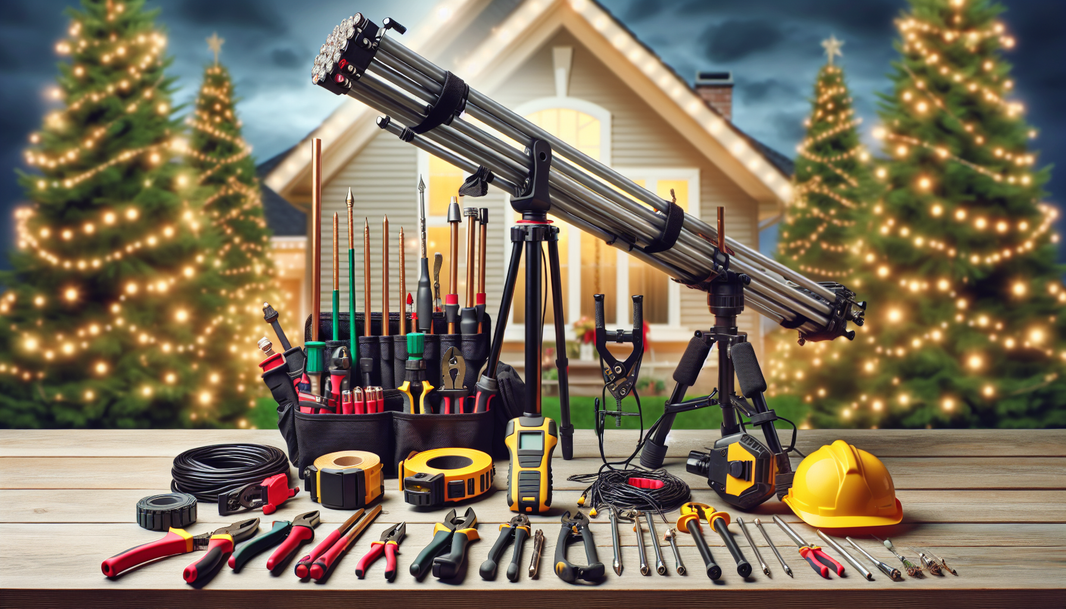Table of Contents
Intro
Lighting up your outdoor bushes and trees can add a stunning visual element to your holiday display, but running power to multiple plants that are not conveniently located can be a challenge. In this comprehensive guide, we’ll share two effective methods for powering your bushes and trees, ensuring a clean, professional look that will impress your guests.
Overview
When it comes to lighting up your outdoor greenery, the key is to find a way to provide power without creating an unsightly mess of cords and plugs. The two approaches we’ll cover – using lamp cord and jumper cables – offer flexible solutions that can be tailored to your specific setup. Whether you’re a seasoned pro or a newbie to holiday lighting, these techniques will help you achieve a polished, cohesive look.
First Method: Lamp Cord
The first method we’ll explore is using lamp cord, a versatile and easy-to-use option for powering your bushes and trees. Lamp cord, also known as SPT-1 cord, can handle up to 7 amps, making it suitable for running multiple strands of mini lights.
To get started, you’ll need to determine the male end of the lamp cord and where it will be plugged in. Then, simply run the cord along the base of your bushes and trees, adding inline female plugs at the base of each plant. These female plugs will provide power connection points for your lights, allowing you to plug in your strands without running cords from bush to bush.
One of the key benefits of this method is its flexibility. The lamp cord can be easily routed around obstacles and hidden in the mulch or foliage, creating a clean, professional look. Additionally, the inline female plugs make it easy to add or remove lights as needed, without having to worry about unsightly cords.
Second Method: Jumper Cables
If you have access to pre-made extension cords, the second method using jumper cables can be an effective solution. This approach involves creating a “daisy chain” of power, where one extension cord powers multiple bushes and trees.
Start by plugging in your main power source, such as a heavy-duty extension cord with a three-way splitter. From there, use the jumper cables to connect the male ends of your light strands to the various power points along the extension cord. These compact jumper cables make it easy to transfer power without having to run additional cords.
One of the advantages of this method is the ability to use existing extension cords, which can save you the cost of purchasing new equipment. Additionally, the jumper cables allow you to create a more streamlined power distribution, minimizing the number of visible cords.

Conclusion
Whether you choose the lamp cord or jumper cable approach, the key to successfully powering your outdoor bushes and trees is to focus on creating a clean, professional look. By strategically placing your power sources and utilizing the right tools, you can achieve a visually stunning holiday display that will impress your guests.
Remember, attention to detail is crucial when it comes to holiday lighting. Take the time to neatly route your cords, hide unsightly connections, and ensure that your power sources are secure and weatherproof. With a little bit of planning and the right techniques, you can transform your outdoor space into a winter wonderland that will be the envy of the neighborhood.
FAQ
How much power do I need for my bushes and trees?
The amount of power required will depend on the type and number of lights you’re using. As a general rule, 40 strands of mini lights draw about 1 amp. Be sure to check the power requirements of your specific lights and choose a power source (lamp cord or extension cord) that can handle the total load.
Can I run cords from bush to bush?
While it may seem like a quick and easy solution, running cords directly from bush to bush is not recommended. This can create an unsightly and unprofessional look. Instead, focus on using the methods outlined in this guide to keep your power sources and connections hidden and organized.
How can I hide the cords and plugs?
Strategically placing your power sources, routing cords along the base of plants, and using natural-colored extension cords can all help to camouflage your lighting setup. You can also try gently moving mulch or foliage to conceal any visible connections.
What if I don’t have access to the specific products mentioned?
While the products featured in the video can be helpful, you don’t necessarily need to purchase them to achieve great results. The key principles of the two methods – using lamp cord or jumper cables to create a clean, organized power distribution – can be applied using similar products that you may already have on hand or can easily find at your local hardware store.


